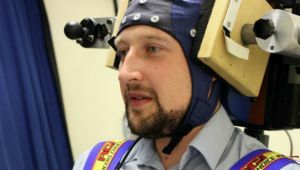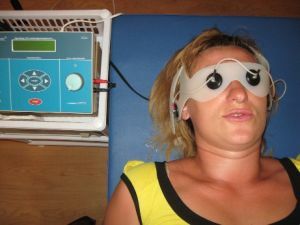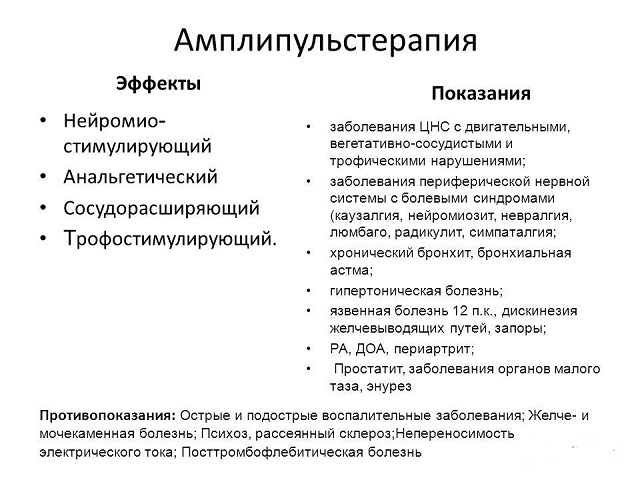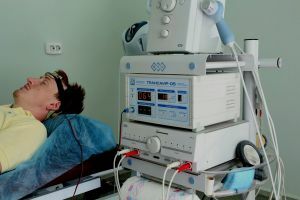 You can solve health problems by taking medications, using traditional medicine recipes or oriental practices.
You can solve health problems by taking medications, using traditional medicine recipes or oriental practices.
Electrostimulation, as one of the methods of electrotherapy, doctors actively use in the treatment of many diseases, including those associated with neurological disorders.
Active application of the procedure allows to normalize the work of muscles, brain, to conduct therapy of diseases of internal organs.
Electrostimulation: What is it?
The appointment of an electrical stimulation course for some people is a cause of concern, as not everyone knows what this procedure is. The method is based on the effect on tissues and nerve endings of pulsed currents of varying strength and frequency.
The main purpose of this method is to strengthen the activity of organs and systems, stimulate nervous activity or work of muscles. The technique effectively helps to restore the body after the trauma. Electrostimulation( electromyostimulation and brain) refers to the physiotherapeutic complex of procedures.
Electrostimulation is performed by attaching to different parts of the body that need treatment, sensors through which a weak electrical discharge is delivered. The patient feels a slight tingling, which does not bring unpleasant sensations. During the procedure, a person can lie or sit.
How it works: what is the therapeutic effect of
The safety and effectiveness of the procedure depends on strict adherence to certain rules that all patients need to adhere to.
The parameters by which the device is configured are determined at the stage of diagnosis by the attending physician. Electrodes can be fixed on the hands, feet.
Modern techniques use the mounting of an electrode on the arm and applying the second to the closed eye. As a result, the patient receives a weak electrical impulse - a similar method is used, for example, to treat a neurological complex of diseases.
Electrostimulation of the muscles( interstitial myoneurostimulation) works as follows - in the zone that needs treatment,  is affected by the apparatus with weak electric currents, which causes the stimulation of a complex of biochemical and energy processes.
is affected by the apparatus with weak electric currents, which causes the stimulation of a complex of biochemical and energy processes.
As a result of the impact, recovery processes begin to work, which is why the muscles return the lost strength, the CNS diseases recede. Feature - recovery processes are triggered not only in the surface layers of tissues, but also in the deep structures of cells.
Simultaneously, in cells:
- , protein biosynthesis is increased;
- improves the functionality of cell membranes;
- increases the transport of substances through membranes;
- improves cell nutrition.
Blood increases the speed of movement in places affected by electrical impulses.
Therapeutic effects achieved by electrostimulation:
- increased visual acuity;
- expansion of accommodation reserves;
- normalization of indicators of the visual system;
- improved muscle function;
- normalization of the central nervous system.
A person who has undergone a course of treatment becomes calmer, the working capacity of muscles and nervous system returns, and interruptions with biological rhythms disappear.
Basic parameters of the
procedure In order to perform the procedure of electrostimulation, constant pulsed currents are used. They differ in form, they distinguish:
- rectangular pulse;
- is exponential;
- is a half-sine wave.

Electrostimulator Intranron
The pulse duration during the procedure is used within the range of 1-300 ms, depending on the indications of the diagnostic study.
Often, to achieve the greatest efficiency, a series of pulses of a variety in duration and frequency is produced. The current intensity is up to 50 mA.Sinusoidal modulated currents are also used. Their frequencies are within 2000 and 5000 Hz, with a current strength of up to 80 mA.
The duration and intensity of the course of therapy as a whole is determined exclusively by the attending physician. The reason for this is the data obtained during the observation. The symptomatology, timing and severity of the CNS lesion or injury is also among the important information.
One procedure lasts 2-40 minutes. It is important to remember - one muscle or nerve can not be stimulated for longer than 3 minutes in a row. At the end of this time, it is required to give this site a rest of at least 10 minutes, after which you can repeat the effect.
Physiotherapy and electrical stimulation of the brain and muscles, including, should be done daily. The course of treatment is from 10 to 30 days. The next course can be made not earlier than one month after the end of the first one.
Indications for use
Any procedure can be performed solely on indications obtained as a result of a comprehensive study. The main diseases in which electrostimulation is shown:
- myopia;

- spasm of accommodation;
- asthenopia;
- strabismus( including those caused by birth trauma);
- presbyopia;
- prevention of visual overexertion;
- of the nervous system;
- lesion of the retina and optic nerve;
- muscle disorders;
- BAS;
- cerebral palsy;
- autism;
- cataract.
Also the effect of weak electrical impulses is shown in the postoperative period, for recovery after sports injuries.
Techniques and methods of procedure
For the procedure the patient should take a comfortable position. It is best to relax and lie on a flat surface. Sometimes it is recommended to sit on a chair or couch. There are several methods for conducting electric shock treatment.
Transcranial electrostimulation is intended for activation of processes and impulses of the brain. The procedure is performed by rectangular pulses of low frequency and power. Electrodes are attached to the patient's head, he is sitting on a chair at this time. The duration of exposure is about 10 minutes.
Interstitial electrostimulation is performed when the patient lies on the stomach. On the skin in the area that requires exposure, an electrode is fixed, which determines the direction of the current. Before the beginning of the session, the gasket between the body and the electrode is moistened with warm water for the effectiveness of the treatment. If 2 electrodes are used, they are placed on opposite sides of the exposure zone. In order to be able to perceive incoming electrical impulses, under the skin at the site of exposure, a thin special needle is inserted. The duration of the session is 15-30 minutes. The number of repetitions is 1-3 times a week, the course is 3-8 sessions.
Electrostimulation of the brain involves an average of 10 sessions. The duration of one procedure is 10 minutes, but with each subsequent session the time increases and at the end it can reach 45-50 minutes. The patient is placed on the head "cap" of the electrodes. During the procedure, he can sit or lie. Unpleasant or 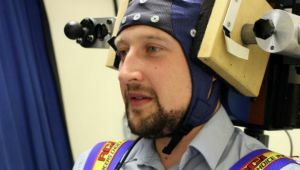 painful sensations are completely absent. Repeat the course is recommended after 6 months.
painful sensations are completely absent. Repeat the course is recommended after 6 months.
In the treatment of eye diseases, active electrostimulation in the optic nerve is actively used. It is carried out by means of a special device. The patient can look through the holes, electrodes can be attached to it, or special glasses can be attached, which send weak impulses, perceived by the eyes, as a glow. The duration of one session is 15-20 minutes.
In the case of injuries, damage, in the diagnosis of a number of neurological diseases, electric muscle stimulation( myoneurostimulation, NMES) is prescribed. The procedure starts with the fact that the patient is fastened with electrodes to a site that needs an electric shock.
Electrodes are attached to 1-2 per site. For effectiveness, a moistened cloth is applied, which enhances the effect of healing currents. The strength and frequency of the pulses is weak, but can be amplified by the apparatus according to the indications. Duration of the procedure is 5-20 minutes. The course consists of 10 sessions. Repeat is possible after 1 month.
Restrictions for procedure
Refusal to conduct procedures related to exposure to electrical impulses can be in the following cases:
- has atrial fibrillation;
- complete transverse cardiac blockade;
- polytropic extrasystole;
- violation of blood pressure, including high arterial hypertension;
- established an active form of rheumatism;
- there are frequent vascular crises;
- marked a tendency to bleeding.
Contraindications are also trophic ulcers( a large number of them), the presence of inflammatory processes, fever, fever, the transferred stitching of muscles, nerves and tendons( for a period of 30 days).
After falling from the bike, I had to restore the muscles on my right leg. An unsuccessful fall resulted in a rupture of the tendon and a strong muscular trauma. Passed 10 procedures. The course ended just a week ago, I can say that slowly, but I can walk, the procedure is effective and completely without pain and discomfort.
Stanislav
Electrostimulation was prescribed to strengthen the muscles of the back. The first few procedures did not have any effect, but by the middle of the procedure, the doctor and I noticed a positive effect. Now I can do the work with the same load.
Nikita
Electrostimulation is a modern technique that influences biological processes that affect cellular structures, and therefore allows to achieve positive changes in a short time.

